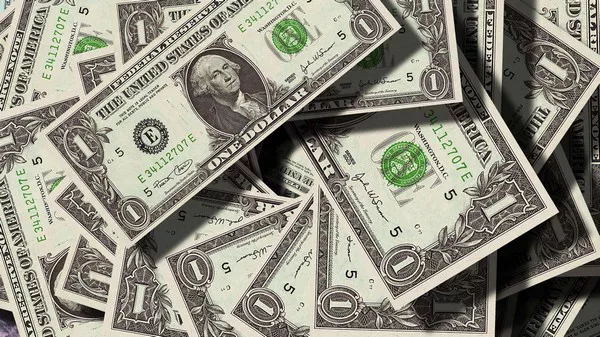A measure of the extent to which the dollar has changed against a basket of currencies.
It measures the strength of the dollar by calculating the rate of change of the dollar and the combined rate of change against a selected basket of currencies, thereby indirectly reflecting changes in the competitiveness of U.S. exports and import costs.
The rise of the dollar index indicates the rise of the dollar compared with other currencies. That is to say, the major international commodities are denominated in dollars, so the corresponding commodity prices should fall.
The US dollar is the legal tender of the United States of America. As the currency with the largest circulation in the world, it is widely used by many countries as a balance of international payments. Therefore, the US dollar has become the main currency in global exchange and international payment and plays a very important role in the world.
The Dollar index is an index that comprehensively reflects the exchange rate of the dollar in the international foreign exchange market and is used to measure the change degree of the exchange rate of the dollar against a basket of currencies.
It measures the dollar’s strength by calculating its rate of change against a composite of selected currencies, each of which has a different weight in the dollar index:
57.6%, 13.6%, 11.9%, Canadian dollar 9.1%, Swedish krona 4.2%, 3.6%, through the analysis of the trend of the dollar index can indirectly reflect the United States export competitiveness and import cost changes.
The rise of the dollar index means the rise of the dollar against other currencies, that is to say, the appreciation of the dollar. Then the major international commodities are denominated in dollars, so the corresponding commodity prices should fall.
The appreciation of the dollar is good for the entire economy of the country, raising the value of the domestic currency and increasing purchasing power.
But it also has an impact on some industries, for example, the export industry, which raises the price of the export goods, so it has an impact on the export goods of some companies.
If the American index falls, the opposite is true.
Exchange rate (also called foreign exchange, or foreign exchange market) The rate of exchange between two currencies, which can also be regarded as the value of one country’s currency against another.
Exchange rate is also a financial means for each country to achieve its political goals.
Exchange rates change because of interest rates, inflation, national politics and each country’s economy.
The exchange rate is determined by the foreign exchange market.
The Foreign exchange market is open to various types of buyers and sellers for extensive and continuous currency transactions (Foreign exchange transactions are conducted 24 hours a day except weekends, i.e. from 8:15 GMT Sunday to 22:00 GMT Friday.
Refers to the current exchange rate and refers to the exchange rate quoted and traded on the day but paid on a specified date in the future).
The rise and fall of a country’s foreign exchange market has an impact on import and export trade, economic structure and production layout.
Exchange rate is the most important adjustment lever in international trade. The decline of exchange rate can promote export and inhibit import.



























